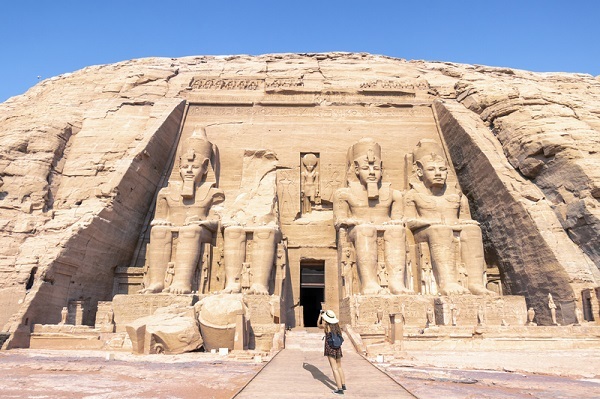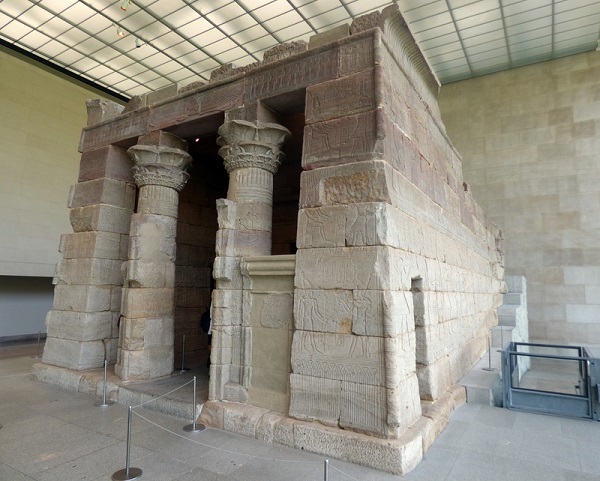

The Nubians were a tribe that lived in a region that included sections of modern-day Sudan and Southern Egypt. They were one of the earliest civilisations ever recorded. They gained prominence as a result of their strategic positioning along trade routes where priceless commodities like incense, ebony, and ivory were frequently negotiated. They also possessed abundant gold reserves, which they utilised for political and economic dominance as well as for artistic embellishment.

Abu Simbel temple
Description: Two enormous rock temples called the Abu Simbel temples are located at Abu Simbel, Nubia, in southern Egypt. The complex is a component of the "Nubian Monuments" UNESCO World Heritage Site.
Between the Egyptian city of Aswan and the capital of Sudan, Khartoum, scientists estimate that the region has been inhabited for at least 700,000 years.
The early humans who lived there gradually built the first civilization and disseminated their knowledge throughout the Arab Peninsula, the Middle East, Asia, and Europe.
At Kaddanarti, stone tools from the Nubian Nile Valley were found (North Sudan).
Similar to the 70,000-year-old artefacts discovered nearby Halfa and Qastal (in Aswan), the development of these Oldowanian stone tools led to the "Nubian Complex," an industry that attested to the evolution of ancient arts and crafts over time.
Since 13000 BC, bone, wood, ivory, and shell have all been used to make tools and utensils. In 1964, remnants of these implements and tools were discovered at archaeological sites nearby old Halfa that were drowned beneath Lake Nubia (now known as Lake Nasser).
The magnificent representation of humans and animals painted and carved into rocks ten thousand years ago can be seen in the Abu Simbel region's rock paintings and carvings.
The illustrious Pharaohs of Egypt were preceded by this noble Nubian civilization, and gifted Nubian sculptors and artisans were those who created and set the groundwork for the Pharaonic Era, giving the world an unrivalled and incomparable cultural, artistic, architectural, and scientific inheritance.
The political ties between Egypt and Nubia were complicated. On the one hand, Egyptian society and the army honoured Nubian residents; on the other, Egypt began to infringe on Nubian territory as early as 3100 BCE. To take advantage of the plentiful Nubian resources that were then present in the Nubian desert, Egypt built military structures and gold mines.
Egypt had subdued Nubia by the time of the late predynastic period, commonly known as the New Country (1550–1070 BCE), and had seized control of the entire kingdom. Viceroys were among the several figures of authority they established there intending to manage Nubian resources and enhance the wealth of the Egyptian monarchy through the use of tribute money.
After Egypt annexed Nubia, numerous members of the southern tribe worked to build several Egyptian temples honouring both Egyptian and Nubian gods in various sites. The Nubian Kingdom of Kush overthrew Egypt during the 25th Dynasty, which ran from 773-664 BCE, and annexed Memphis, the country's capital city at the time, as their own. They chose Nubia as the location for the burial of their monarchs.
Statue of Lady Sennuwy
Kushite Pharaoh
The Temple of Dendur

The Temple of Dendur
Description: The Temple of Dendur was relocated to New York in 1965 to save it from being submerged by the construction of the Aswan Dam
Ram's-head Amulet.
Following the fall of the last Nubian kingdom in roughly 1504, the eventual inflow of Arabs and Nubians into Egypt and Sudan helped to suppress the Nubian identity.
A significant portion of the contemporary Nubian population became entirely Arabized, and some made Arab ancestry claims.
The vast majority of Nubians are presently Muslims, and in addition to their native old Nubian language, Arabic is their primary language of communication.
A difficulty arose for Nubia as the need for iron increased. To create iron, they needed firewood, which consumed the majority of their wood supply. Iron was in higher demand, but Nubia was unable to manufacture as much iron as it had in the past.
As trade declined, the nation weakened, which later led to the collapse of the Nubian civilizations. Traders started looking to other nations for iron.
After a brief period of prosperity, Nubian civilizations were subsumed by Egyptian monarchs. Lower Nubia was once again ruled by Old Kingdom Egyptian pharaohs in 2000 B.C. They had organised government i.e., it was headed by chiefdom in tribes, and formalised religion, Amon or Amun was the most prominent God with Isis as the Goddess of Motherhood and Fertility. They developed cities, specialized their labour, were divided into social classes, had a sense of record keeping and writing and specialised in art and architecture.
Q1. What were the Nubians famous for?
Ans. Nubians lived in the central Nile valley. They transported the skill of making pottery with them. Before switching to farming and fishing, they were the first big game hunters and ranchers. Nubia's population was typically made up of a diverse mix of African peoples as more people migrated into the region throughout time from the south.
Q2. Is Nubia older than Egypt?
Ans. In what is now northern Sudan and southern Egypt, the area known as Nubia was home to civilizations that predate the dynasty Egyptians.
Q3. What alphabet did the Nubians create?
Ans. One of the first true alphabets, Meroitic, a script with 23 signs, was the writing system they created.